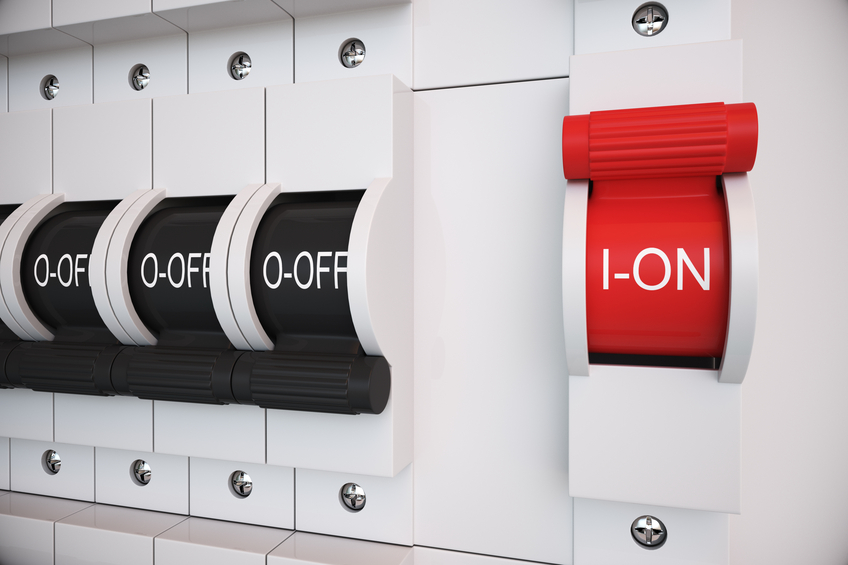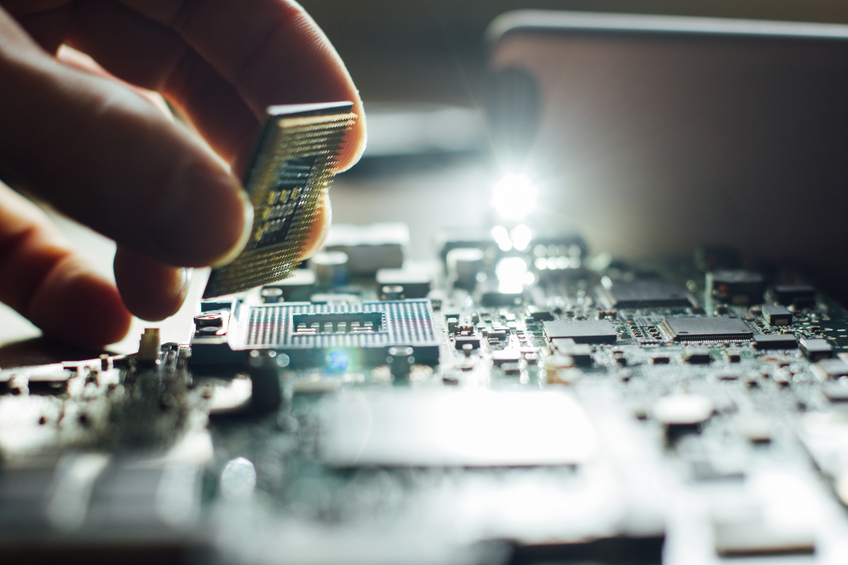Electrical Components 15 PDH Discount Package
Circuit Protection Devices (E03-005)
Electrical Conductors (E02-005)
Transformers (E04-006)
Wiring Techniques (E03-007)

This online engineering PDH course provides general requirements, classifications, installation, maintenance, testing, and application information for circuit control devices, and covers the requirements for switches, relays and solenoids.
Circuit control in its simplest form, is the application and removal of power. This can also be expressed as turning a circuit on and off or opening and closing a circuit. Before you learn about the application of circuit control devices, you should know why circuit control is needed. If a circuit develops problems that could damage the equipment or endanger personnel, it should be possible to remove the power from that circuit. The circuit protection devices (fuses and breakers) are not the control devices; these are protection devices that will remove power automatically in event of overload conditions. Circuit control devices allow you to turn the device ON when it is needed and OFF when it is not needed.
This 3 PDH online course is applicable to students, professional engineers, service technicians, energy auditors, operational & maintenance personnel, facility engineers who are interested in gaining a better understanding in circuit control devices.
This PE continuing education course is intended to provide you with the following specific knowledge and skills:
- State reasons for providing circuit control devices
- List three general types of circuit control devices
- Identify the schematic symbols for a switch, a solenoid, and a relay
- State the difference between a manual and an automatic switch and state the reason multi-contact switches are used
- State the type of switch used to prevent the accidental energizing or de-energizing of a circuit
- State the meaning of the current and voltage rating of a switch
- State the operating principle of a solenoid and describe how to check a solenoid for proper operation
- State the operating principle of a relay and how it differs from a solenoid
In this professional engineering CEU course, you need to review Chapter 3 of Module 3 titled "Circuit Control Devices" of the Naval Education and Training Materials (NAVEDTRA 14175), Electricity and Electronic Training Series.
Upon successful completion of the quiz, print your Certificate of Completion instantly. (Note: if you are paying by check or money order, you will be able to print it after we receive your payment.) For your convenience, we will also email it to you. Please note that you can log in to your account at any time to access and print your Certificate of Completion.

This online engineering PDH course describes how a proper circuit protection strategy reduces long-term maintenance needs and costs, and minimizes system downtime.
Too much current flowing through an electric circuit can damage the circuit and can create a safety hazard. How much current is "too much current"? That depends on the circuit and its components. For some circuits, 1 ampere would be too much current, while for other circuits 1 ampere would be perfectly acceptable. A proper circuit protection strategy reduces long-term maintenance needs and other costs, and minimizes system downtime. Circuit protection devices protect electrical equipment by rapidly disconnecting power to components in the event of an abnormal overload conditions resulting from excessive voltages, ground faults, and accidental shorting of a circuit.
This 3 PDH online course is applicable to students, professional engineers, service technicians, energy auditors, operational & maintenance personnel, facility engineers who are interested in gaining a better understanding in circuit protection.
This PE continuing education course is intended to provide you with the following specific knowledge and skills:
- State the reasons why circuit protection is needed
- Define a direct short, an excessive current condition, and an excessive heat condition
- State the way in which circuit protection devices are connected in a circuit
- Identify two types of circuit protection devices and learn their types and characteristics
- List the three time delay ratings of circuit breakers
- Define selective tripping and state why it is used
- Identify the factors used in selecting circuit breakers
- List the methods of checking and the items to check when replacing and/or maintaining fuses and circuit breakers.
In this professional engineering CEU course, you need to review Chapter 2 of Module 3 titled "Circuit Protection Devices" of the Naval Education and Training Materials (NAVEDTRA 14175), Electricity and Electronic Training Series.
Upon successful completion of the quiz, print your Certificate of Completion instantly. (Note: if you are paying by check or money order, you will be able to print it after we receive your payment.) For your convenience, we will also email it to you. Please note that you can log in to your account at any time to access and print your Certificate of Completion.

This online engineering PDH course provides general requirements, classifications and application information for electrical conductors.
A conductor is a piece of metal used to conduct electricity, known colloquially as an electrical wire. Wires are very good conductors, which mean that they have very little resistance. In fact, their resistance is so small that often we consider it to be zero. (In other words, we often treat wires as perfect conductors).
In United States, conductors are measured by American wire gauge (abbreviated AWG) for smaller ones, and circular mils for larger ones. To give you some idea how thick these wires are; AWG 0000 wire is about 11.7 millimeters in diameter (a little less than one-half inch thick) and at the opposite end of the scale, AWG 40 is less than 0.1 millimeters in diameter (about as thick as a strand of hair from your head). The wiring inside the walls of your home is usually AWG 10 or AWG 12 wire.
This 2 PDH online course is applicable to students, professional engineers, service technicians, energy auditors, operational & maintenance personnel, facility engineers who are interested in gaining a better understanding of electrical conductors.
This PE continuing education course is intended to provide you with the following specific knowledge and skills:
- Recall the definitions of unit size, mil-foot, square mil, and circular mil
- Define specific resistance and recall the three factors used to calculate it in ohms
- Describe the proper use of the American Wire Gauge when making wire measurements
- State the factors required in selecting proper size wire
- State the advantages and disadvantages of copper or aluminum as conductors
- Define insulation resistance and dielectric strength
- Identify the safety precautions to be taken when working with insulating materials
- List the most common insulators used for extremely high voltages
- Recall the design and use of coaxial cable
In this professional engineering CEU course, you need to review Chapter 1 of Module 4 titled "Electrical Conductors" of the Naval Education and Training Materials (NAVEDTRA 14176), Electricity and Electronic Training Series.
Upon successful completion of the quiz, print your Certificate of Completion instantly. (Note: if you are paying by check or money order, you will be able to print it after we receive your payment.) For your convenience, we will also email it to you. Please note that you can log in to your account at any time to access and print your Certificate of Completion.

This online engineerng PDH course explains how transformers convert between high and low voltages, change impedance, and provide electrical isolation between circuits.
A transformer is an electrical device that transfers energy from one circuit to another purely by magnetic coupling. Transformers are often used to convert between high and low voltages, to change impedance, and to provide electrical isolation between circuits.
A basic transformer consists of two sets of coils or windings close to each other (sometimes wrapped around an iron or ferrite "core"). Each set of windings is simply an inductor. Power is fed into one coil (the "primary"), which creates a magnetic field. The magnetic field causes current to flow in the other coil (the "secondary"). The alternating current that flows through the primary winding establishes a time-varying magnetic flux, some of which links to the secondary winding and induces a voltage across it. The number of times the wires are wrapped around the core ("turns") is very important and determines how the transformer changes the voltage.
This 4 PDH online course is applicable to electrical engineers, design and construction personnel, technical staff and facility personnel who are interested in gaining a better understanding of transformers.
This PE continuing education course is intended to provide you with the following specific knowledge and skills:
- Understand transformer action and its physical characteristics
- State the difference in construction between a high and a low voltage transformer
- State the meaning of a "no-load condition" and "exciting current"
- State the meaning of leakage flux and its effect on the coefficient of coupling
- Identify a transformer as step up or step down and state the current ratio of a transformer when given the turns ratio
- State the mathematical relationship between the power in the primary and the power in the secondary of a transformer
- State the three power losses in a transformer
- List five different types of transformers according to their applications
- State the general safety precautions when working with transformers
In this professional engineering CEU course, you need to review Chapter 5 of Module 2 titled "Transformers" of the Naval Education and Training Materials (NAVEDTRA 14174), Electricity and Electronic Training Series.
Upon successful completion of the quiz, print your Certificate of Completion instantly. (Note: if you are paying by check or money order, you will be able to print it after we receive your payment.) For your convenience, we will also email it to you. Please note that you can log in to your account at any time to access and print your Certificate of Completion.

This online engineering PDH course describes many of the techniques used to prepare wire (cutting, stripping, crimping), install various types of connectors (soldered and solderless), and how to properly build and route harnesses and conduits. It will help the user understand wiring fundamentals, grasp the principles of circuit connections and procedures, and install circuits in various applications.
The satisfactory performance and continuous reliability of electrical system greatly depends on the quality of wiring. Improperly or carelessly installed wiring can be a source of both immediate and potential danger, and many malfunctions and failures can be traced to this cause.
This 3 PDH online course is applicable to students, professional engineers, service technicians, energy auditors, operational & maintenance personnel, facility engineers who are interested in gaining a better understanding in wiring techniques. This course is also extremely helpful to individuals who are just learning the principles of safe electrical wiring, hoping to refresh their existing knowledge or would like additional opportunities to practice wiring principles.
This PE continuing education course is intended to provide you with the following specific knowledge and skills:
- State the basic requirements for any splice and terminal connection
- Explain the major advantage of the crimped terminal over the soldered terminal
- Name the two types of insulation commonly used for non-insulated splices and terminal lugs
- State an advantage of using pre-insulated terminal lugs and the color code used for each
- Explain the procedures for crimping terminal lugs with a hand crimp tool
- Recall the procedures, precautions, and tools associated with soldering
- Explain the procedures and precautions for tinning wire
- Recall the types of soldering irons and their uses
- State the purposes and required properties of flux
- State the purpose for lacing conductors
In this professional engineering CEU course, you need to review Chapter 2 of Module 4 titled "Wiring Techniques" of the Naval Education and Training Materials (NAVEDTRA 14176), Electricity and Electronic Training Series.
Upon successful completion of the quiz, print your Certificate of Completion instantly. (Note: if you are paying by check or money order, you will be able to print it after we receive your payment.) For your convenience, we will also email it to you. Please note that you can log in to your account at any time to access and print your Certificate of Completion.